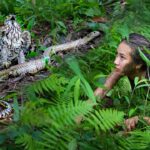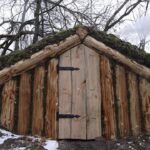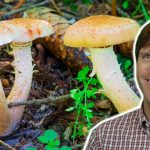11 Easy Edible Plants for Beginner Foragers- Eating Wild Food
For most of us, our food comes from the supermarket and beyond that we don’t know much about it or the far-off lands that it comes from. Today I am here to help you realize that food is growing freely and abdundantly all around you, you just have to open your eyes and look at the land in a different way. To do that I am going to share 11 easy plants to begin foraging. [music playing] There are 3 main guidelines with the plants that I am going to be sharing with you today. First, they are widely available, so these are plants that are spread out through much of the world or have very similar plants to them around much of the world. I am focusing on plants in North America, although I am in France right now. Secondly, these are plants that are highly abundant, so you will find them in very large quantities often and spread throughout the region that you are in. And then last, they are quite easy to identify and very safe plants to work with. Now today I am not going into the details of identification, there are a lot of resources for that. So if you want identification go to www.robgreenfield.org/foraging and there are all the resources that you need for that there. The number 1 rule of foraging is “only eat something if you are 100% certain of what it is. That is the key to safe foraging. So make sure that you follow that rule, but do not be overly worried, these are plants that humans have lived with for as long as humans have really existed. This is life. So do not be so afraid of it. Now speaking of fear, I want to start with stinging nettles. Here in France they call this “ortie.” This is a plant that a lot of people fear because of the stingers on it. Yes, this stings. My legs are actually stinging right now because I am surrounded by it. But I will even show you that this plant that so many people fear, you can roll it up, and you can eat it raw, even, just by having the right practice there. But best for me, made into a tea or boiled and then sautéed, but a lot of people also eat this raw. So I wanted to start with stinging nettle because it is super abundant and also because it is one of those ones that really, people consider it a pest, consider it a problem, consider it an enemy, but it is actually a great friend of ours. Next, I want to share with you Plantago or broadleaf and narrow leaf plantain. And you will see right where I am, I am in this disturbed area right along the road-side. This is a very, very minorly trafficked road that I am walking by, but I wanted to show this area because this is where you will often find this. In disturbed areas. So this is the broadleaf plantain, it is one of my favorite plants. This is what I find in North America and then this is the narrow-leaf plantain that I find a lot over here in Europe. I haven’t seen this one much in North America. You have heard this saying, “Let thy food be thy medicine,” this is a great example, this is both food and medicine. When I get stung by bees when I am beekeeping, I chew this up, this makes a poultice and if i mix it with honey, then I put it on, it reduces the swelling drastically. I wanted to start with these because it is really one of my favorite plants, and one that you will see very abundantly in fields, in abandoned lots, and in rural areas in the woods as well. Next up is dandelion, another personal favorite of mine, something that is all over the place, and I’m showing a couple different leaves here. You can see sometimes here they have a red vein in the center, sometimes not, you can see sometimes it is more toothed and sometimes it is more lobed. You can see here the flower head that has already released its seeds. It has a beautiful yellow flower. The flower is edible and the leaves are edible as well. Early on in the spring they are not very bitter, but later in the summer they become very bitter. You can eat them raw or you can put them in the salads, you can cook them as well. And the root, is actually edible as well. It makes a coffee substitute when roasted. That one is not as much a beginner thing because it has some processes, compared to just eating the greens, adding them to your salad. So dandelions are definitely a good friend of the forager. Here is wild mint, and this is definitely one of my favorites because it is a wonderful little trailside snack and a natural little pick-me-up, and breath mint as well. This one is pretty strong. I really like to add this to salads, I make a nice sun tea from this just putting this in water and leaving it in the sun for the day really makes a nice sun tea. Or of course you can make tea on the stove with it. That is really all that needs to be said, that mint is growing wildly and there are many varieties, some that are growing in the water, some in moist areas, some in less moist areas like this, many varieties and it is a wonderful little snack. Now I am in a bed of wood sorrel. This is wood sorrel all around me, or Oxalis. Now you see the three lobes on this, maybe they would be called? A lot of people think that this is clover, but it is not. It is Oxalis or wood sorrel. Now the good news is, clover is edible as well, and the flowers are edible of the clover as well as the leaves, but this has a totally different taste, this has a very lemony tart flavor, and this is a great one to get kids foraging with because it often is sort of associated with candy because of the strong tart flavor. You can see it being really low to the ground here, but I also see wood sorrel growing really tall. When I was in southern California I saw it growing over a foot and just in clumps that you could snip and have huge clumps for the salad. Wood Sorrel is wonderful for kids, wonderful for a snack, wonderful for a salad, and if you mistake it for clover, clover is edible too. So here is more wood sorrel growing up this old stump and then behind it is another one of my favorites, and that is watercress, and the name watercress here we are along with this fresh flowing water. You find it by fresh water. I just have one here, and here on the property that I am in this area, I have not found a large abundance of watercress however many of the streams I have been to in the past years, you will find huge swaths of this. To me it is like a wild arugula. It has a strong flavor and one that I really like. Again, eat it raw, add it to salads, you can sautée it as well. Watercress. Love it! So here we are in the field now, and I have come across a wild Brassica. These are common throughout a large amount of the world. Brassica includes mustard, cabbage, turnips, broccoli, kale. There are a lot of different plants in the Brassica genus. But you do not really have to be able to tell them apart, and they are hard to tell apart. But you know you have a brassica with these yellow flowers and these buds. You can actually see the buds, very similar to broccoli. When you have broccoli, each of those little green buds turns into a flower. In your garden, if you let broccoli go to seed, it will turn into these yellow flowers. The buds are edible, the flowers, the seed pods once they are formed, and the leaves are edible as well. This is a great plant to start foraging with, very common. I have seen it all throughout places I have traveled to. So what you see here is a sea of wild onion, also called wild leek, and depending on what continent you are on, either ramsons or ramps. You will often find whole forest floors covered in this. When you can find this, it can be extremely abundant. There are many different types of wild onions or wild garlic, and to be honest I often can not tell the difference between them. I do not really care, they all are a wonderful addition to my meals. This one here is called ramsons or ramps, depending on whether you are in North America or Europe. Both the seeds are edible, the leaves, and the shoots, and you can harvest the bulbs as well. Wherever you are, keep your senses open for the smell of onion. If you are mowing your lawn and you smell onion all of a sudden, you are mowing over a wild onion. Here I am with a springtime raspberry or blackberry plant. I have to be honest here, I do not know if this is raspberry or blackberry, I am still somewhat of a beginner forager. I will be able to tell you once the berries are here for sure whether it is a raspberry or a blackberry but at this point I do not know. Behind me you can see a whole hedge of it, and the reason that I am showing blackberry and raspberry is because one, it is extremely abundant, you find huge amounts of it and you can just gorge on these berries, two, it is very widespread, I see this so often all across the United States, Europe, and other parts of the world, it is spread throughout. And it is also very easy to identify blackberries and raspberries. This is the plant here, but once the berries are out in a few months (it is still springtime here, it is mid-May) then you know it for sure. One thing to mention, though, that a lot of people do not know, is that the leaves make a really nice tea, so even in the springtime, these plants can make a really nice benefit from a trip out to the woods or to the prairie or wherever you are going to find these. They are in the city and the countryside, spread throughout. Raspberries and blackberries are not the only berries, though, of course, a really common one to forage is blueberries. Strawberries are growing all around this area right now as well, they are another really easy one to start foraging with. Once you get into the berry world, you will realize there are hundreds of different edible berries out there. I just chose these because these are some of the most abundant and easy to identify. The last plant that I want to share with you today is one that probably every one of you has bought at the grocery store, and that is apples. This right behind me is an apple tree, growing right here wild on the side of the road. Now, recently I took a trip to my homeland in northern Wisconsin, and I found over fifty apple trees that were growing abundant with apples that nobody else was eating. Many of these were on the roadside like this, many of them were in the woods, some were from abandoned orchards, and many were in people’s front yards spilling over onto the sidewalk with hundreds of apples going to waste because they were not the exact type that they liked to buy at the grocery store. Fruit trees are a great thing to forage, so many of them go to waste in urban environments, and you will find a lot of them in the wild as well. Do not forget about crabapples! They are sour, they are tart, but they actually make a really nice snack when you get the right tree, and you can make ciders out of them. So that is it for today, there are so many other easy beginner plants that I want to teach you, but for today I am going to leave it at those eleven. And I want to leave you with a really helpful tip: just focus on learning one new plant per week. Learn it, forage it, eat it, and if you do that for an entire year, and you learn one new plant per week, after one year you will know and have foraged fifty-two different plants, so you can go from a total novice forager to being fairly experienced in one year if you put the work into it and you put the time and you just take it one step at a time. And you do not have to go really far away, start in your own backyard. Start with the things like the dandelions and the nettles and the wood sorrels and the clovers. Start with these easy things and build your confidence up. If you want to go further and you want more details, and you want to learn the ethics to foraging, which is so important, go to robgreenfield.org/foraging and if you learned a lot from this video, and you want other people to learn this as well, make sure to share this video, comment and like it to help it get out into the YouTube world, and if you are not subscribed, make sure you subscribe and invite your friends to as well. I love you all very much, happy foraging, and see you again real soon. Subtitles by the Amara.org community



